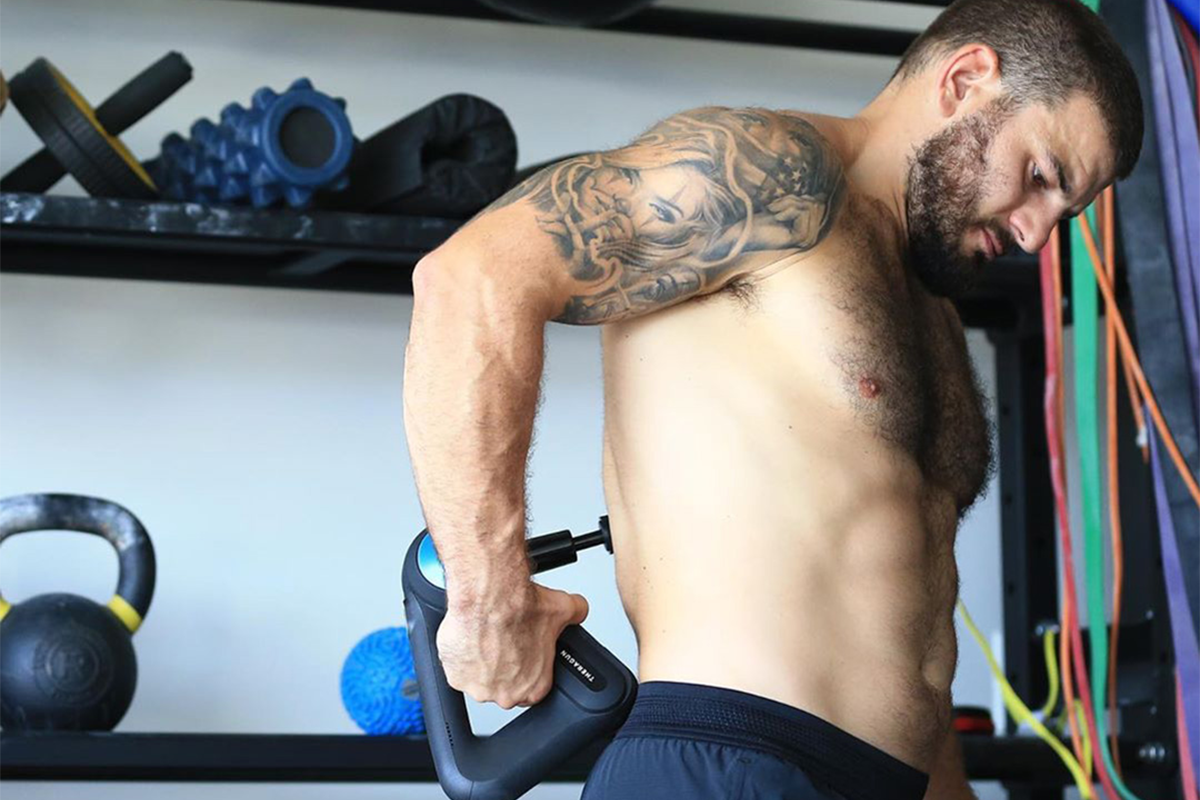You might know by now how important recovery is. You spend time foam rolling. You have a muscle stick. You even do yoga on your active rest days. But you were recently introduced to something new: muscle scraping. What is muscle scraping exactly, and what are the benefits? And importantly, how do you go about doing it?
Let’s dive into all the details!
What is Muscle Scraping?
To better understand what muscle scraping is, let’s back up for a moment. You have what’s called soft tissue. This tissue makes up your muscles, ligaments, fascia, and tendons. Over time — and countless WODs — these tissues experience a ton of wear and tear. You might even experience injury. All of this can lead to adhesions, which are basically areas of tough, rigid, stuck-together tissue. This can snowball into tightness, pain, a lack of mobility, and even further injury. We need a way to help them heal. And that’s where scraping comes in.
Muscle scraping isn’t far from what it sounds like. You (or a physical therapist) can use a tool to gently “scrape” over a problematic muscle. This helps to reduce these adhesions and “loosen” the fibers and tissues of the muscles. Muscle scraping is a type of myofascial release. (Fascia is also tissue.)
The practice of scraping itself actually isn’t new. Scraping is an old technique, also referred to as “gua sha,” in Chinese medicine, dating back as early as 1300 during the Ming Dynasty. If we break the phrase down, it translates into “scraping” (gua) and “energy blockage” (sha). They would typically use a stone made of jade or an animal horn, and they’d scrape it across the skin. The belief was that doing so would increase blood circulation in the troubled area and thus encourage healing.
What are the Benefits of Muscle Scraping?
In releasing the muscle tissues, muscle scraping offers a number of benefits, including:
- Reduced swelling.
- Decreased pain in the immediate area.
- Increased range of motion.
- Improved blood flow/circulation.
- Releasing toxins from your tissues.
Science is still catching up but so far, research agrees that scraping is beneficial. One study published in the Journal of Traditional Chinese Medicine found that scraping helped to alleviate lumbar muscle strain. Another study in the same journal demonstrated that scraping can help with weightlifting ability by “decreasing weight sensation and improving serum biochemical parameters.”
Scraping helps the tissue return to a healthier state so that you can feel better and move more easily and safely. Scraping isn’t only for those who have been injured. Even if you’re experiencing simple pain or tightness, you can reap the benefits of scraping. You might find athletes scraping just about any muscle in their body — from their forearms and quads to their hamstrings and upper back.
Does Muscle Scraping Get Rid of Knots?
Yes! Knots are actually just adhesions, so muscle scraping can be an effective way to eliminate them.
Does Muscle Scraping Hurt?
Muscle scraping can be uncomfortable if you’re working on an area where you experienced an injury and now have scar tissue. Also, the more the muscle is strained or restricted, the more uncomfortable it can feel.
Bear in mind, though, that over time, as you scrape the muscles, the pain should subside significantly.
Is Muscle Scraping Safe?
Yes, muscle scraping is generally safe. There are certain muscles that you might have a hard time properly reaching, and that’s where it helps to have someone assist you. If you’re dealing with any of the below conditions, speak with a medical professional first:
- Infection.
- Open wounds.
- Unhealed injuries.
- Blood clots.
- High blood pressure.
You should also double-check before muscle scraping if you’re pregnant, have a kidney disorder, or if you’re taking blood thinners. And finally, check with a PT or other medical professional before scraping over varicose veins, scar tissue, bruises, burns, or swelling.
How Do You Do Muscle Scraping?
Ah, yes. The burning question.
First, you’re going to need to get your hands on a muscle scraper! There are various kinds.
Shop Now
While these tools mostly function the same way, the one you’re most comfortable with comes down to personal preference. Some also come with a balm/gel to help to tool glide across your skin better.
First, apply the balm or a small amount of oil. You don’t need much — a little bit goes a long way! Then, with the edge of the muscle scraper, use moderate pressure and scrape in one direction in strokes, not back and forth. Do this for 15 to 30 seconds, always in the same direction, and then move on to the next area, if necessary. Is your skin turning red? Don’t panic. That’s the idea!
The tool will do much of the work for you, so don’t feel like you need to press down too hard. Also, remember that too much of a good thing can be a bad thing. Scraping the area for more than about 30 seconds can be too much.
How often should you scrape? That depends on what the area looks like the next day. If the redness has mostly gone away and the area isn’t too tender, you’re likely safe to scrape again. Otherwise, give it another day or two before going at it again.
One Final Important Note
Remember that muscle scraping isn’t a replacement for stretching, mobility exercises, warm-ups, or cool-downs. It should complement a healthy lifestyle, as opposed to replacing any element of it. Use it as part of your normal recovery programming, and you’ll enjoy the many benefits. Also keep in mind that for those extra sticky spots, a lacrosse ball can be quite effective.
Ready to get started? Check out The WOD Life’s selection of scraping tools today!




















